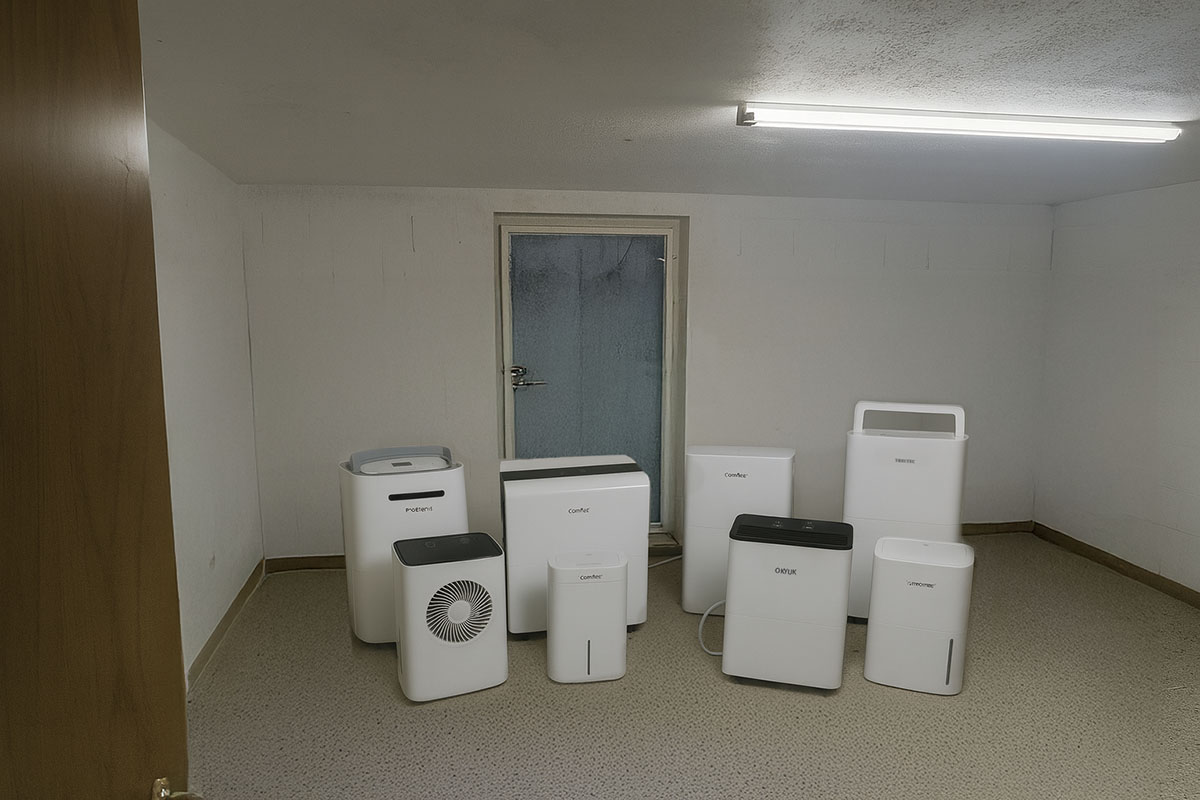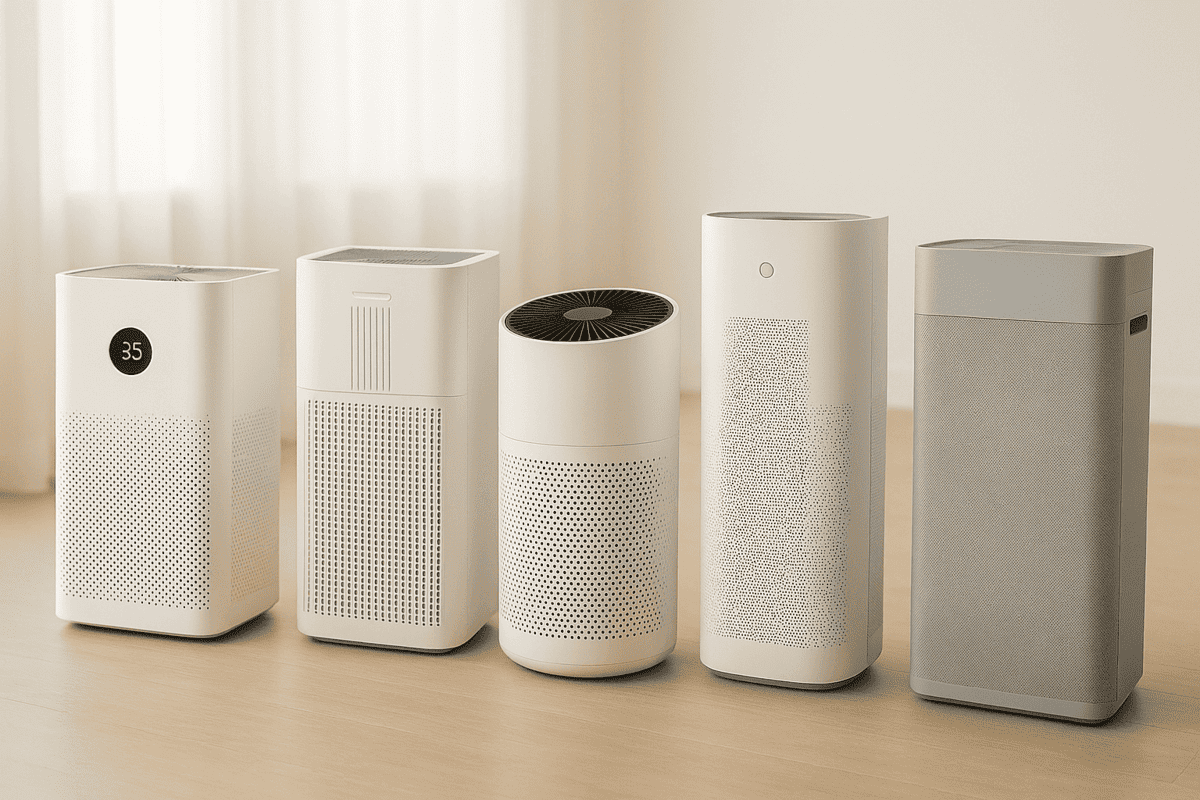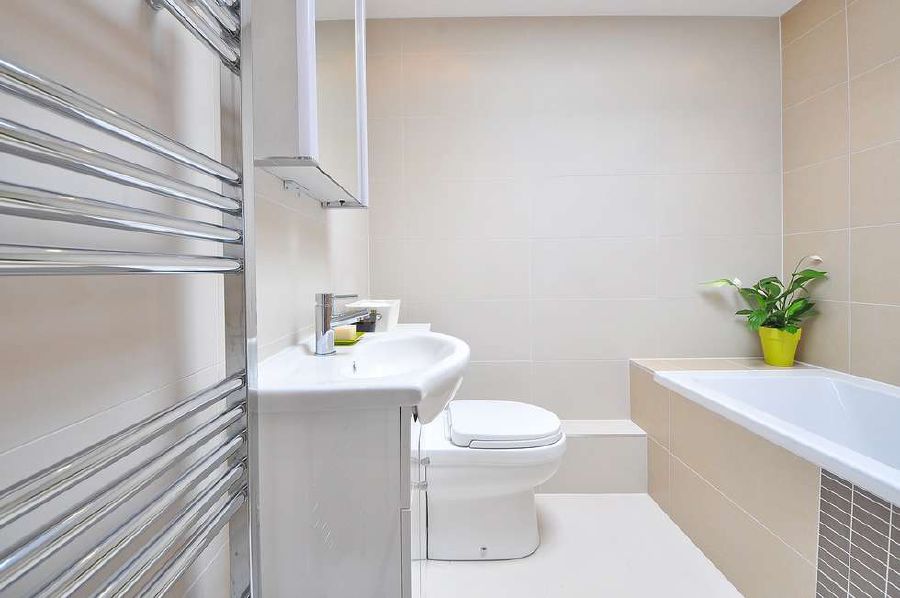Indoor climate
Ventilating interiors is undoubtedly important. The main purpose of ventilation is to Moisture removalthe Fresh air supply and the Eliminating odours.
The most interesting questions about ventilation are these:
- How to ventilate properly?
- When is a good time to air the room?
- How to ventilate the different rooms (bathroom, living room, cellar) correctly?
Let's first take a look at the different ventilation techniques and the advantages and disadvantages they have.
Ventilation basics
The aim is to improve the indoor climate in terms of humidity, temperature and fresh air. The easiest way to achieve this is simply to open one or more windows. You can tilt a window - i.e. open it just a crack - or open it completely.
Tilt the window or open it completely?
In most cases, it is better to open the window as wide as possible. Opening the window(s) short and wide will Shock ventilation called. Shock ventilation aims to maximise the exchange of air in a short space of time. But why is this better than leaving the window ajar?
Shock ventilation is particularly beneficial in winter: the longer you leave a window open, the more time the room has to cool down. Shock ventilation also lets in cold air, but the walls and furniture do not cool down, or only slightly.
If a window is left tilted open for a long time in winter, the lintel, for example, cools down slowly and remains cold for a relatively long time even after closing. Heating it up again costs unnecessary energy.
Switching off the heating when airing the room saves energy. After airing, you can turn the radiators back up to the normal temperature.If there is a switched-on radiator under the window, it registers the cold air during airing and only gets hotter. This literally throws a lot of energy out of the window. In addition, the flow of warm air from the heating directly under the window can slow down the exchange of air. Therefore: turn down the heating when ventilating.
Cross ventilation
If the layout of the room allows it, it is advisable to open opposite windows at the same time. This will ensure a good draught and it Air exchange is faster. However, make sure that this draught is not too strong, as it can slam doors and windows and even damage them.
Reduce humidity
There are many sources of humidity indoors. Humans are one of them: sweating and breathing out humid air can several litres of moisture per person per day mean. In addition, there are other appliances present in most households that cause humidity:
- Water vapour during cooking and baking
- Showering and bathing
- Drying laundry
- Dishwasher
Houseplants also provide more humidity in the room. The same applies to aquariums, pets in general and any other place where water can evaporate (e.g. indoor fountains).
Ventilation attempts to exchange the humid air in the room with the less humid air from outside. This sometimes works more or less well, as the humidity of the outside air also fluctuates depending on the weather and time of year. It works really well when the outside air is a good deal drier than the air in the room.
Condensation on the window: a bad sign
If you can observe condensation on window panes, this is an indication of incorrect ventilation. The window panes are often the coldest surfaces in a room. This is why moisture condenses there first. If this happens, either the room temperature is too low, the humidity is too high, or both. Depending on the case, heating and/or ventilation is then required.
Misted-up window panes should also be wiped clean. Otherwise, individual drops could run down and damage the frame, the window sill or the wall below.
Insulation, refurbishment & new build
Newly renovated or newly constructed buildings are usually very well insulated. However, ventilation is particularly important when the interiors are well sealed.
In new buildings, not all walls and ceilings may have dried out yet. This represents an additional source of moisture.
When, where and how long to ventilate?
In winter, the outside air is relatively dry. So you should have hardly any problems with ventilation in terms of reducing humidity. However, cold air comes in during ventilation in winter. To keep heating costs within reasonable limits, strong and Short ventilation in winter often better - so Shock ventilation.
In summer, the temperature of the outside air is not so far removed from that inside. It is therefore quite possible to ventilate for long periods without the rooms cooling down. As summer air tends to be humid, lowering the humidity is more of a problem here. For this you should Ventilate for longer in summer (for approx. 30 minutes). In summer, use the early morning or late evening for ventilation. The summer air tends to be drier at these times.
While it is usually worse to just tilt a window, this can be appropriate for the bedroom in summer: continuous ventilation during the night counteracts the moisture emitted by people. However, sleeping with the window open is a matter of taste and only possible in good weather. In noisy cities, there is also the question of whether the noise pollution allows it.
How to ventilate which room?
The requirements for air exchange vary depending on the purpose of the room. These rooms are particularly critical for air humidity:
Kitchen & bathroom
In the kitchen and bathroom, cooking, showering and bathing produce lots of water vapour. Humidity is extremely high during this time. For this reason, you should Ventilate immediately afterwards. It can also help to close the doors to these rooms. In this way, the moisture will not spread to other areas.
Wet towels or shower curtains in the bathroom keep the humidity high for a long time.Bathrooms and kitchens need to be ventilated either more intensively or more often. Automatic ventilation systems are a good solution for bathrooms or kitchens without windows.
Modern models measure the humidity and switch on or off accordingly. Or they are linked to the light switch or a motion sensor and only switch on when someone enters the room.
Bedroom
The bedroom is often not heated as much and is a few degrees below the temperature of the living room or kitchen, for example. Cold air can absorb less moisture than warm air. You also spend relatively long periods of time there and increase the humidity with the air you breathe out. Keep a close eye on the humidity in the bedroom and ventilate it several times a day. In summer, depending on the outside noise and weather, it can help to tilt the window open overnight.
Utility room
The room in which you dry your laundry often has a high level of humidity. This is not surprising, but should be taken into consideration. Because even if no-one enters the room for a long time, drying laundry will create humidity for days.
If a tumble dryer is used, this moisture is released in a much shorter time. This is why many models can be connected directly to a ventilation system that is connected to the outside world. This is an elegant option, but requires structural measures in new builds or renovations.
Cellar
The cellar is usually much colder than the rest of the house. There is therefore a higher risk of water condensing on the cold walls - just as can happen on window panes. If the cellar is finished in the same way as the other rooms, then it can also be ventilated in a similar way.
If it is an underground cellar that has not been converted, its temperature may differ significantly from that of the rest of the house. In this case, it can be harmful if warm air from other rooms flows into the cellar, cools down there and moisture condenses.
As the temperature difference between the cellar and outside air is also low in this case, it becomes more difficult to get rid of the humidity in the cellar. This is where a dehumidifier can help.
Airing in the rain
When it rains, of course, no rainwater should get into the interior during ventilation. If possible, you can try using windows that open on the downwind side lie. Even when it rains, the humidity of the outdoor air can be lower than that of the indoor air. It therefore makes sense to ventilate even when it is raining.
Ventilate when pollen is flying
Depending on the location, there are certain times when pollen is particularly abundant. In the city, the early morning hours are ideal for airing out. In the countryside, it is the late evening hours [ 1 ] .
Ventilation aids
Relying on your own senses should usually be enough. However, there are some practical devices that can help you to ventilate correctly. A thermometer and a hygrometer, for example. The first measures the temperature of the room air, the other the humidity. The latter is given as a percentage and also depends on the temperature.
Warm air can absorb more water than cold air.This means that a cubic metre of air with a temperature of 15°C and a humidity of 50% contains less water than a cubic metre of air with a temperature of 20°C and a humidity of 50% [ 2 ] .
The most practical are combined devices that measure both the temperature and the humidity inside and outside. With the help of these products, you can determine when to ventilate efficiently.
Ventilation systems
When building a new home or renovating an existing one, you may want to consider installing a ventilation system. It takes care of ventilation for you automatically and - depending on the model - can use sensors to determine when ventilation is useful and when it is not.
In addition, some of these systems are equipped with technology for Heat energy recovery equipped. This means that less heat is lost during ventilation, which can ultimately save you money. These ventilation systems can also be equipped with Filtering for pollen can be fitted. And if you no longer need to open a window, you will be spared any loud street noises in noisy cities.
However, it doesn't work completely without work: the filters of the fans should be checked regularly and replaced if necessary. However, the cost of the filters is limited.
Sources
[1] ↑ https://www.lungenaerzte-im-netz.de/krankheiten/allergien-allgemein/verhaltenstipps/
[2] ↑ https://www.energie-lexikon.info/luftfeuchtigkeit.html
Oven fans
What is an oven fan actually for? The benefits and operation are explained here.







